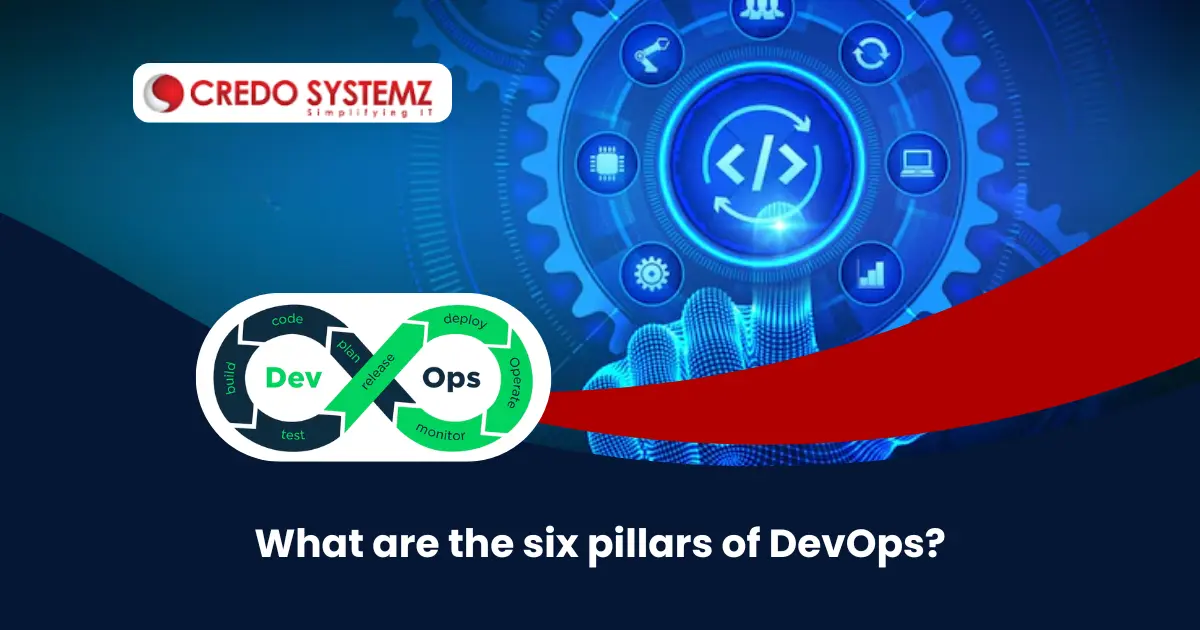
The Six Pillars of DevOps
In the tech industry, companies have widely adopted DevOps practices to automate deployments, streamline workflows, and improve Continuous Integration/Continuous Deployment pipelines. It emphasizes collaboration, automation, shortening the development lifecycle, and continuous improvement.
The fundamental pillars of DevOps that support its core principles are:
- Collaborative Culture
- Automation
- Lean Practices and Agile
- Measurement and Monitoring
- Collaboration and Sharing
- Security
1. Collaborative Culture
The foundation of DevOps is a collaborative culture between the development and operations teams. This cultural shift focuses on continuous learning and improvement with open communication and shared responsibilities. It aims to break boundaries and promote collective responsibility for success and failure.
Organizations that embrace DevOps culture encourage a strong sense of ownership among teams.
2. Automation
Automation is the key to achieving efficiency and consistency in DevOps practices, significantly enhancing software quality. By automating repetitive tasks, teams can accelerate delivery cycles and improve reliability.
Areas of automation include code builds, testing, deployments, and infrastructure provisioning.
Popular DevOps automation tools include:
- Jenkins
- Ansible
- Terraform
- Kubernetes
3. Lean Practices and Agile
Lean principles help DevOps teams focus on delivering value to customers by optimizing various processes. Delivering small updates and features frequently allows teams to embrace agility and adapt quickly to changing requirements.
DevOps and Agile practices involve:
- Continuous feedback loops
- Iterative improvements
- Reducing bottlenecks in software development
Common techniques used include Value Stream Mapping and Kanban boards to enhance efficiency.
4. Measurement and Monitoring
Effective DevOps implementation focuses on the ability to track system performance, logs, and errors in real-time. Key performance indicators (KPIs) include:
- Deployment Frequency
- Lead Time for Changes
- Mean Time to Recovery (MTTR)
- Change Failure Rate
These metrics help organizations gain insights into system performance and make data-driven decisions.
Common observability tools used are:
- Prometheus
- Grafana
- Splunk
5. Collaboration and Sharing
Collaboration and knowledge sharing play a crucial role in DevOps success. This can be achieved by:
- Documentation
- Internal Wikis
- Cross-Team Training
Practices like blameless retrospectives, post-incident reviews, and open-source contributions strengthen shared responsibility and innovation.
DevOps builds a collaborative and learning environment where development and operations teams work together seamlessly.
6. Security
Integrating security into DevOps is essential. Known as DevSecOps, this practice ensures security is embedded throughout the development and deployment lifecycle.
Key practices include:
- Security Automation
- Compliance Monitoring
- Vulnerability Assessments
Tools like Snyk, SonarQube, and OWASP ZAP support secure coding, testing practices, and early risk mitigation.
Conclusion
To sum up, the six pillars of DevOps work together to create an efficient, secure, and high-performing software development process. Organizations that embrace these principles can achieve faster releases, improved system reliability, and enhanced team collaboration—delivering greater value to customers.
Join Credo Systemz Software Courses in Chennai at Credo Systemz OMR, Credo Systemz Velachery to kick-start or uplift your career path.
